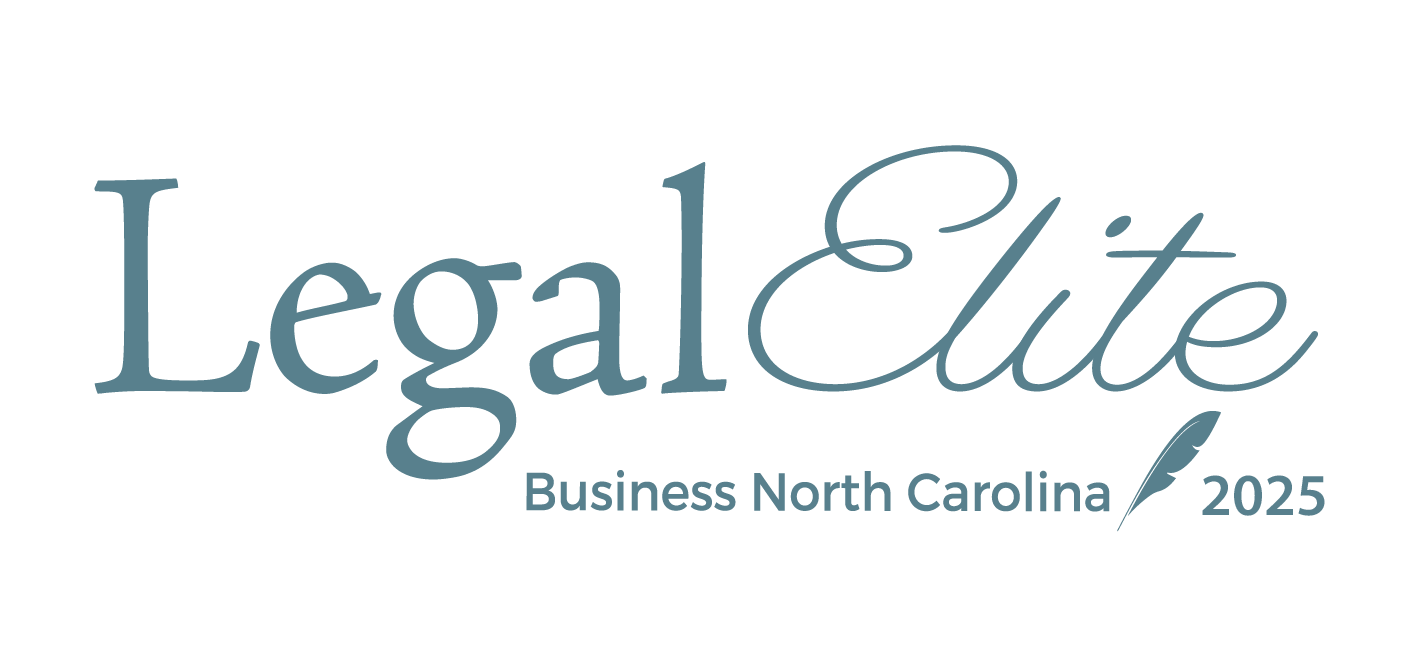Limited liability companies ("LLCs") and limited partnerships ("LPs") frequently are used to accomplish two important estate planning objectives. First, these entities facilitate gifts by individuals to their children and grandchildren, thereby minimizing the value of assets which ultimately are subject to estate taxation at death. Second, LLCs and LPs centralize management of the family property during and after the gifting process, affording the donor effective control over the assets and providing a level of asset protection from creditors. Operationally, LLCs and LPs are closely related. However, because LLCs provide limited liability to all owners (including the manager), and because the management structure of an LLC is more flexible, in North Carolina LLCs are generally favored over LPs for estate planning purposes.
Operation of an LLC
An LLC is a form of business entity authorized by statute, the owners of which are "members." LLCs typically elect to be treated as a partnership for income tax purposes. The management of the organization is vested in one or more "managers." A "member managed" LLC operates much like a general partnership, in that all members serve as managers. For estate planning purposes, LLCs are generally designed as "manager managed" LLCs, where management is segregated from ownership.
So called "family LLCs" (or "FLLCs") take advantage of this separation of control from ownership. With a manager managed FLLC, those members who are not managers (e.g., children and grandchildren) have no right to participate in the management of the entity, may not withdraw unilaterally and receive cash for their membership interest, and are subject to restrictions on the transfer of their membership interest. In contrast, those members who are managers (e.g., parents or grandparents) control all business decisions for the entity, including the power to buy, sell, trade, and operate the FLLC assets without interference by other family members.
Benefits
An FLLC provides both tax and non-tax benefits, which may be summarized as follows:
Non-Tax Benefits:
The non-tax benefits include:
- Providing for the consolidation and succession of management and control of family assets to improve the efficiency of the management of those assets.
- Providing for the arbitration of family disputes regarding the FLLC assets or including other dispute resolution mechanisms.
- Providing a streamlined mechanism for transfers of interests in family assets, thereby simplifying the gifting process.
- Maintenance of the ownership of certain family assets within the family through rights of first refusal.
- Protection of FLLC assets from claims made against family members by third parties.
- Protection of the family members from claims arising out of the assets held by the FLLC.
- Segregation of assets to preserve their status as separate property for purposes of equitable distribution in the event of a divorce.
- Providing a "guardianship substitute" for the ongoing management of family assets in the event of the mental incapacity of a family member.
- Pooling of assets to maximize returns and to provide all family members with access to private investments that require a "qualified investor" under SEC rules.
- Establishing a family investment policy promoting the education of and communication among family members with respect to that investment policy.
Tax Benefits:
The tax benefits are derived from valuation discounting, which allows a donor to "leverage" the gift tax annual exclusion and the lifetime gift tax exemption through an FLLC. For purposes of valuing an FLLC interest given to a child or grandchild, the value of the underlying assets is discounted to reflect the fact that the donee member has no control over the business decisions for the FLLC and that the member's interest cannot easily be sold to a third party for cash. The cumulative effect of these lack of control and lack of marketability discounts may be as high as 50%, which effectively doubles the utility of the gift tax exemptions.
It is important to note that the IRS has challenged the discounts claimed with FLLCs and has attempted to bring the FLLC assets back into the donor's taxable estate. Therefore, the use of an FLLC to generate discounts is not without risk. However, the cases in which the IRS has prevailed have involved "bad facts," such as deathbed transfers and the failure to observe the legal formalities of the entity. Accordingly, while no guarantees can be given, an FLLC that is properly organized and managed should survive scrutiny by the IRS.
An Example of the Family LLC as an Estate Planning Tool
An example illustrates the use of a FLLC in an estate planning context. Assume that a husband and wife own farm and timber land worth $3,000,000; that husband and wife form an FLLC and name themselves as managers; and that they subsequently contribute the farm and timber land to the FLLC.
Assume also that the FLLC membership interests are comprised of a 1% Class A Voting Interest and a 99% Class B Non-Voting Interest. Before discounting, the Class A Interest is worth $30,000, and the Class B Interest is worth $2,970,000. If husband and wife gave the Class B Interest to their children, then without discounting, the gift would consume $2,970,000 of their federal gift tax exemptions.
In contrast, if a business appraiser determines that the applicable discount to reflect the lack of control and lack of marketability of the Class B Interest is 40%, then the discounted value of the Class B Interest is only $1,782,000 ($2,970,000 x 60%). A gift of the Class B Interest to the children would therefore use only $1,782,000 of federal gift tax exemptions. The discounting removes $1,188,000 from the couple's taxable estates. Depending on the size of the couple's estate, that could amount to a $534,600 estate tax savings.
Assume further that husband and wife die 10 years after the gift of the Class B Interest, and that the property in the FLLC has appreciated during that time at a 7% annual rate. The FLLC assets would have a value of $5,901,454, with $5,842,440 of that value allocated to the Class B Interest. Thus, the portion of the FLLC represented by the Class B Interest will have grown from $2,970,000 to $5,842,440 an increase of $2,872,440. All of that appreciation escapes estate tax in the parents' estates, which (assuming a 40% federal estate tax rate) equates to $1,148,976 in estate tax savings. Thus, between the original discounting and this "freezing" of the parents' taxable estates, a total of $1,683,576 in gift and estate taxes has been avoided.
Administration of FLLCS
Even the most meticulously organized FLLC is vulnerable to attack by the IRS or third parties if the family members do not operate and maintain the entity in a way that supports and achieves the entity's non-tax purposes.
While the following is not an exhaustive checklist, clients who are administering FLLCs should strive to take the following actions, which illustrate the maintenance of a valid business purpose:
- Any distributions to the owners should be made strictly pro rata.
- The terms of the operating agreement with respect to the management of the entity and distributions to the owners should be strictly observed.
- The manager of the FLLC should actively manage the assets. To the extent practical, this should include active trading of FLLC assets and establishing and following a set investment policy.
- Consideration should be given to the payment of compensation to the manager to reflect the services provided.
- Most operating agreements do not require annual meetings of the members, but the better practice is to hold annual meetings and to document those meetings with minutes reflecting the discussions of the entity's business. We also suggest that the manager meet annually with the entity's attorney and accountant to review the entity's operations.
- The assets of the FLLC should be segregated from personal assets, separate bank accounts and investment accounts should be maintained for the entity, and detailed separate records should be maintained of all entity transactions, income, and expenses.
- Partnership income tax returns should be filed annually for the entity.
- Clients should avoid transferring "personal use" assets, such as residences, to an FLLC, as these types of assets tend to undermine the business purpose of the entity and suggest that the client had a retained interest in the entity.
- Funding the entity with assets requiring active management will help to support the centralized asset management purpose of the entity.
The bottom line is that, if a client wants the IRS and the courts to treat the client's FLLC as a legitimate business enterprise, separate and apart from his or her personal assets, the client needs to make sure that his or her actions in operating the FLLC are consistent with the legitimate business purposes of the entity.
CONCLUSION
The appropriateness of an FLLC for a particular family must be evaluated by a competent attorney, taking into account the family's particular circumstances. As a general proposition, however, a client with a high net worth can achieve significant estate and gift tax savings through the use of an FLLC, without sacrificing managerial control of family assets.
For further information regarding the issues described above, please contact a member of the Trusts & Estates practice.







